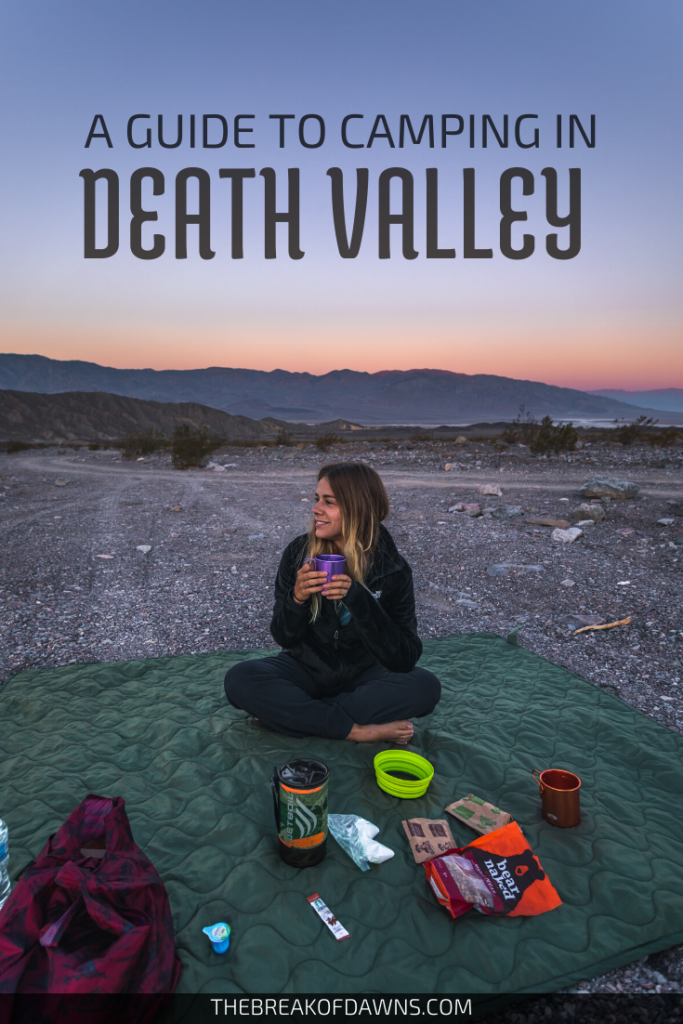
An arid stretch of land so massive, no other National Park in the lower 48 compares in size. With a wilderness area of over 3 million acres, it’s hard knowing where to camp and car camp in Death Valley National Park. Lucky enough, I’ve experienced almost every portion of the park so I know exactly where to take you.
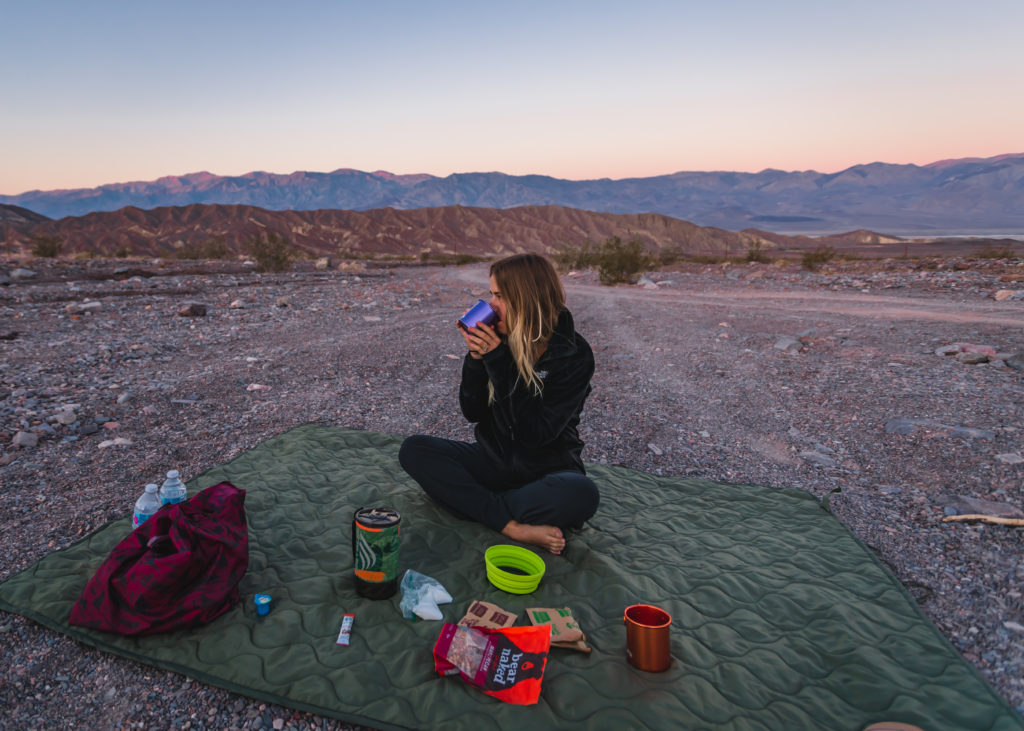
Quick Info for Camping in Death Valley
- Whether you plan on sleeping in your tent or your car, there are multiple spots to camp in Death Valley.
- You can camp up to 30 days in a year for free within in the park (after paying entrance fees)
- Camping is prohibited one mile from all mining structures, 100 yards from any water source and on most day-use only roads. See the full prohibited list here.
- Temperatures in Death Valley can become very extreme in the summer so try visiting October – April. Only a couple campgrounds are open from May – September.
- Except for existing fire pits in campgrounds, campfires are prohibited.
- Be sure to keep your campsite clean at all times. Dispose of your waste properly and hide your food from wildlife.
- If you’re traveling in an RV and need hookups, the Furnace Creek campground is your only option. Reservations can be made from October to April online here.
- Some campgrounds may not be open due to weather. Come prepared for any temps or conditions you may experience.
Click here for updates on campground openings/closures
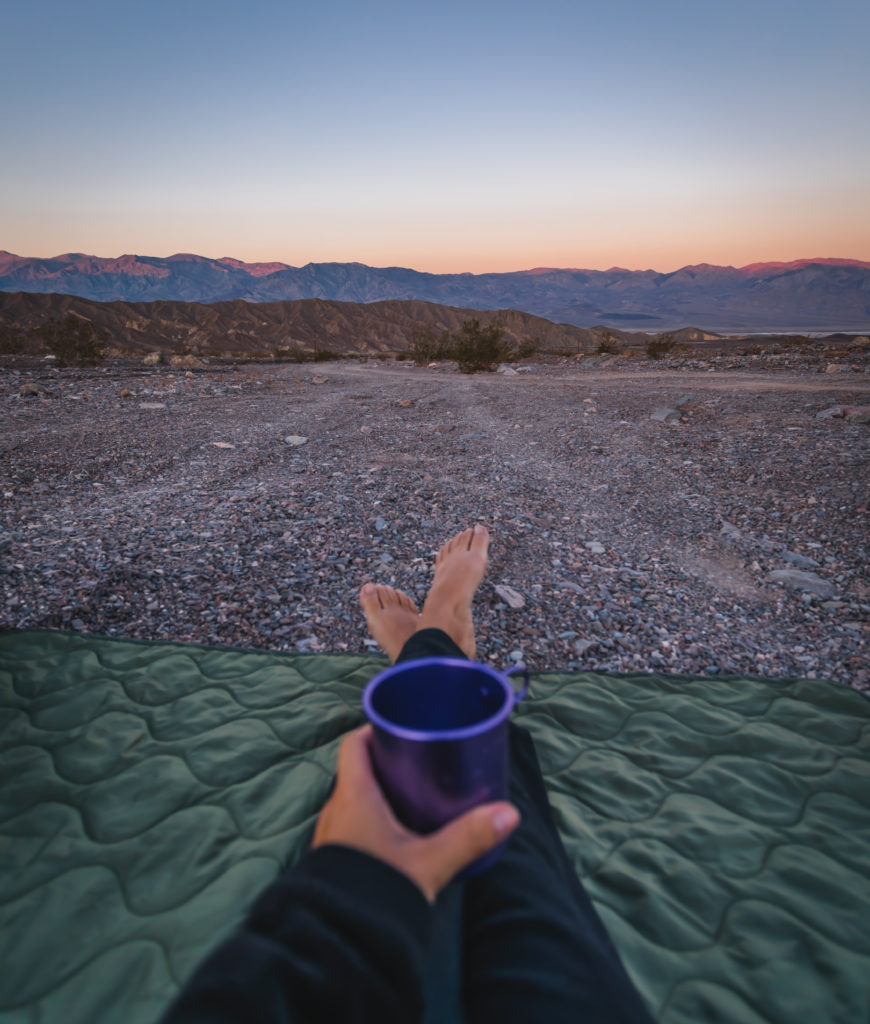
Tent Camping in Death Valley
Whether you’re looking to camp in the backcountry or in an actual campground, you can find multiple camping spots in Death Valley.
Backcountry Tent Camping
With more than 3 million acres of wilderness, the backcountry camping options in Death Valley are endless. It’s important to note that most of the park is in very remote areas so most backpacking is done via cross country travel. Any camping in the backcountry is prohibited one mile from all mining structures, 100 yards from any water source and on most day-use only roads. See the full prohibited list here.
There are close to zero water sources in Death Valley. The trails are not maintained and temperatures can reach intense heights. Only if you’re completely prepared with your backcountry essentials should you camp in the wilderness here.
Coming to Death Valley from Las Vegas and need some gear for the trip? Consider renting your equipment from Basecamp Outdoor Gear. They’re a small outdoor gear rental company that believes in traveling sustainably. Learn more about them on their website here.
Backcountry camping is free in Death Valley but you must obtain a permit. Do so at the Furnace Creek Visitor Center or the Stovepipe Wells Ranger Station. Please remember to follow the Leave No Trace principles while out in the backcountry, especially in reference to food storage. Coyotes previously fed by visitors will approach you if you have food.
Click here for a backcountry wilderness map from the NPS
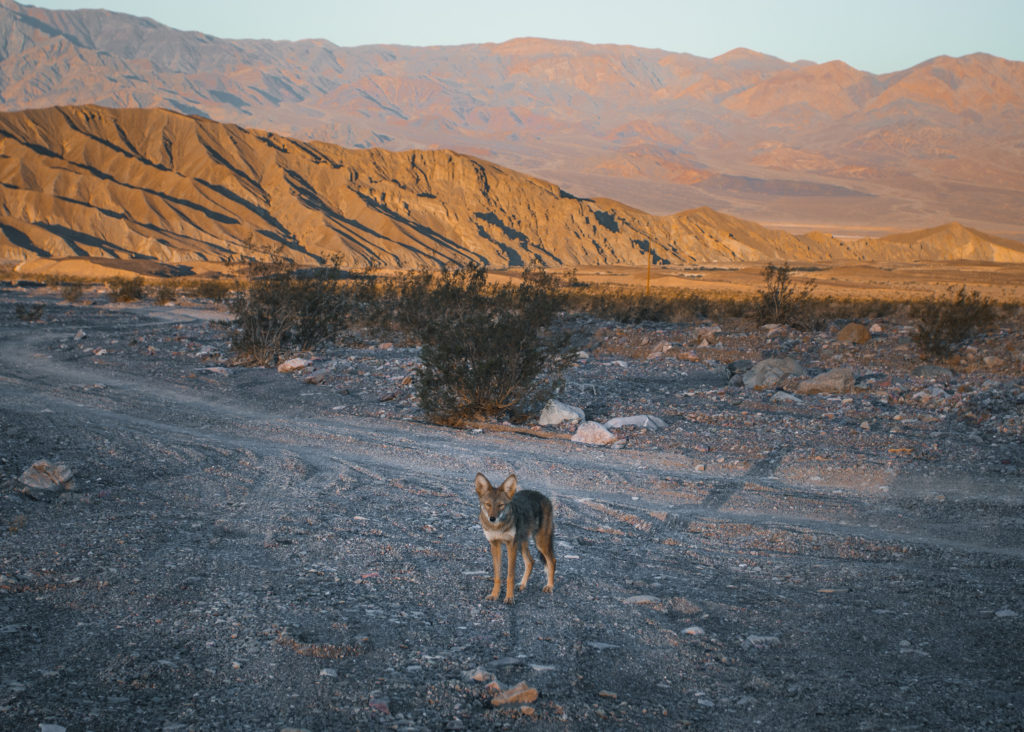
Free Tent Campgrounds
You can technically camp anywhere for free in Death Valley, as long as you are obeying by this prohibited places list. But if you’re wanting to be in an actual campground, tent camp for free at Emigrant, Wildrose, Thorndike, or Mahogany Flat. All of these campgrounds are first-come, first-serve and only open for portions of the year. See campground openings/closures here.
Fee-Charging Campgrounds
The campgrounds located in the central area of Death Valley charge fees for camping during their open months from October – April. These campgrounds include Furnace Creek, Stovepipe Wells and Mesquite Spring.
Furnace Creek accepts reservations from October to April. They must be made at least 4 days in advance, which you can do so here. Remember that all other campgrounds in the park are first-come, first-serve. Since there is no staffing, you will pay the fee at an automated kiosk after claiming your spot.
For privately-owned fee campgrounds in the park, check out Stovepipe Wells Park, The Ranch or Panamint Springs Resort.
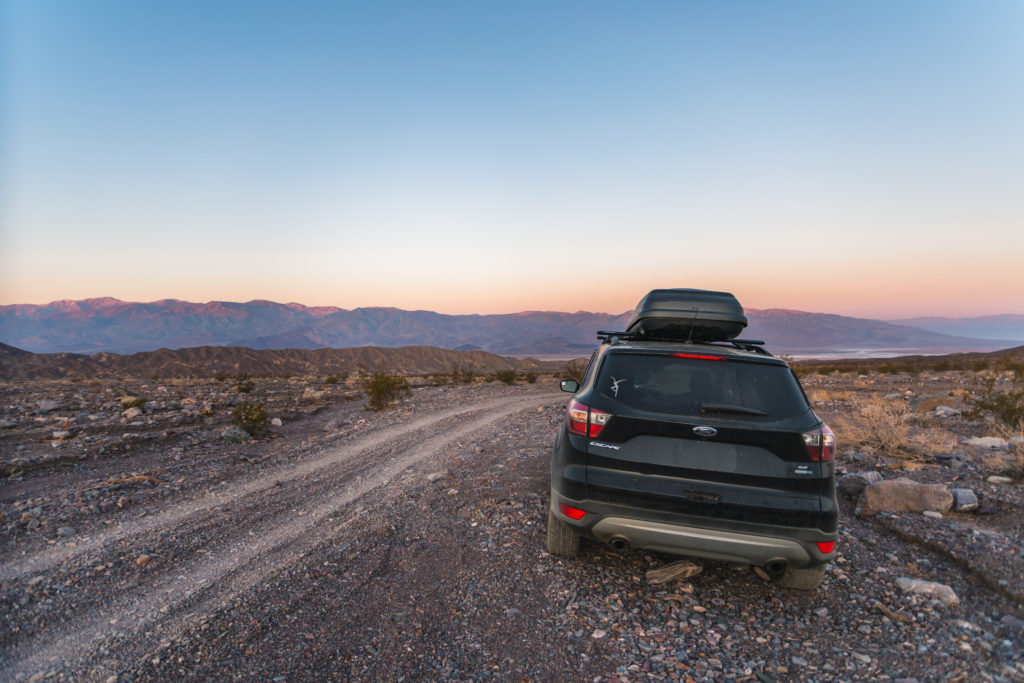
Car Camping in Death Valley
There are over 700 miles of backcountry roads to car camp for free in Death Valley. Remember that off-road driving is prohibited throughout the park due to the fragile desert environment.
Click here for a complete map on all backcountry roads in Death Valley
With more than 30 backcountry roads throughout the park, and I’ve car camped on plenty of them. If you’re wanting to be in a central area of the park, the best car camping spots can be found on Echo Canyon Road, Hole in the Wall Road, Trail Canyon Road or Lemoigne Canyon Road. For a high-elevation backcountry road in the west, head south on Emigrant Canyon Road to find the Tucki Mine Road. There are multiple other car camping spots in the remote areas of Death Valley. A couple of my favorites include the Saline Valley Road, Lippincott Road, Hidden Valley – Hunter Mountain Road, Saline Valley Road and Warm Springs Canyon Road.
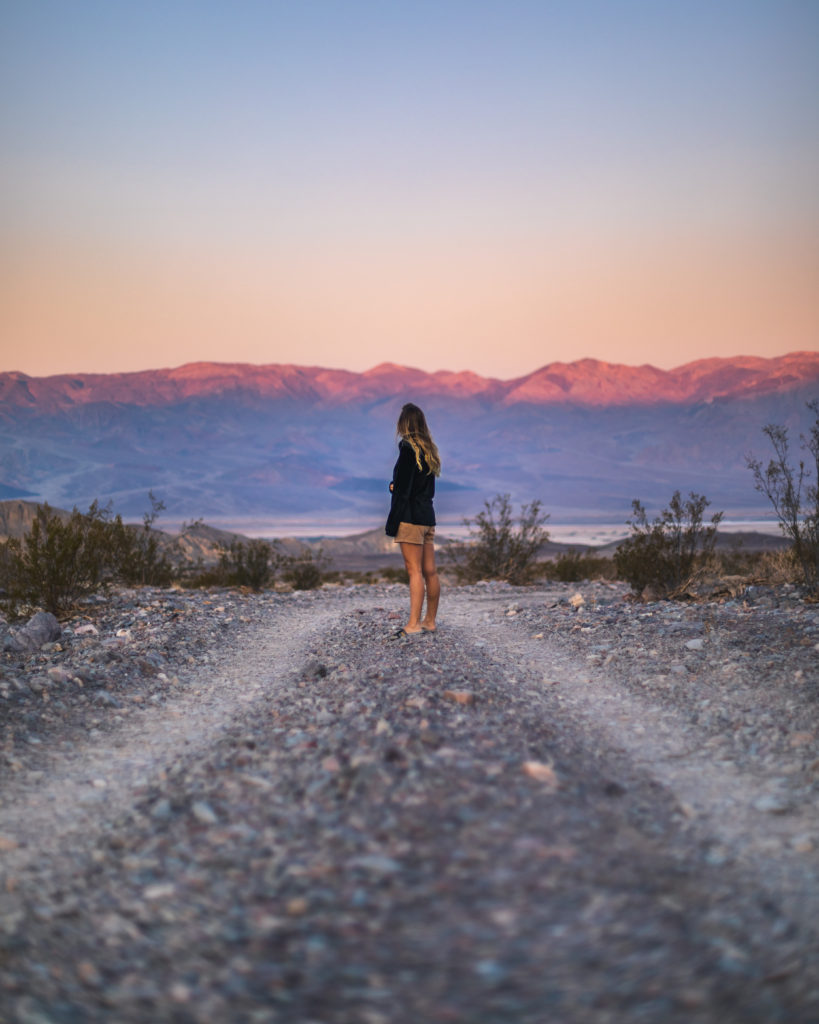
Per the NPS, the following are the requirements for car camping:
- Only car camp on a dirt road.
- Be at least 1 mile from a paved or a day-use only road, 1 mile from all mining structures and 100 yards from any water source.
- Only car camp in previously disturbed areas.
- Park your vehicle immediately adjacent to the road on the shoulder, preferably in an area that has been driven on.
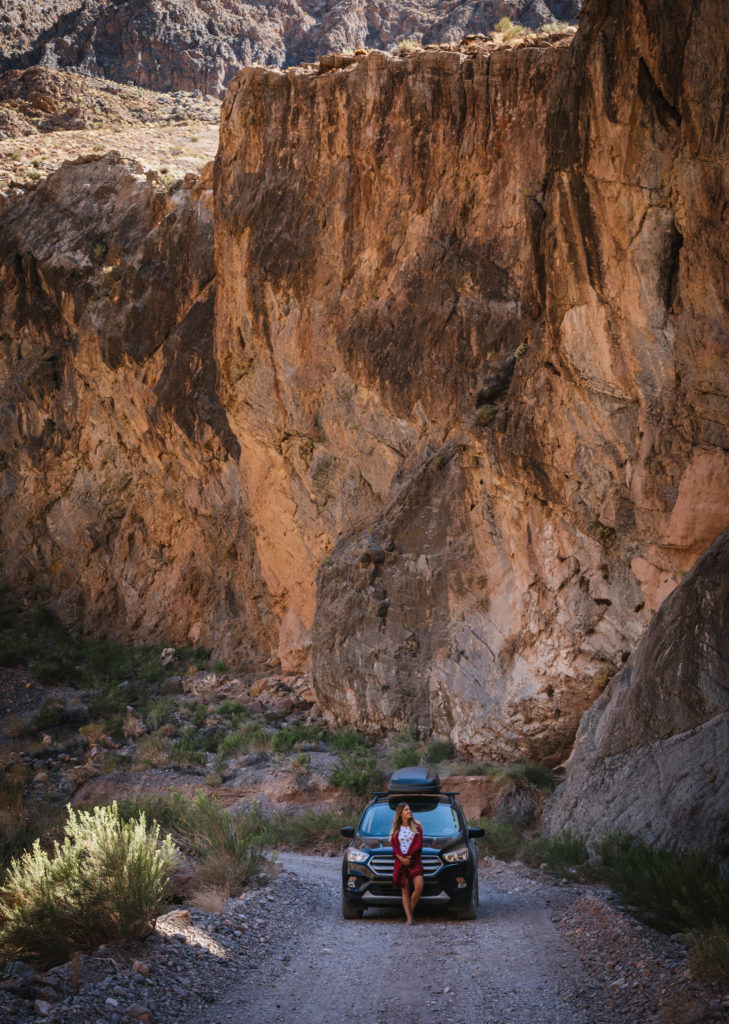
Be sure to check out my Death Valley archive here for more first-hand tips for exploring!
Before heading into natural areas, it’s imperative that you’re familiar with the “Leave No Trace” principles.
Read More: Leave No Trace: The 7 Rules of the Backcountry
Learn more about Leave No Trace on their website here.
Like This Post? Pin It!
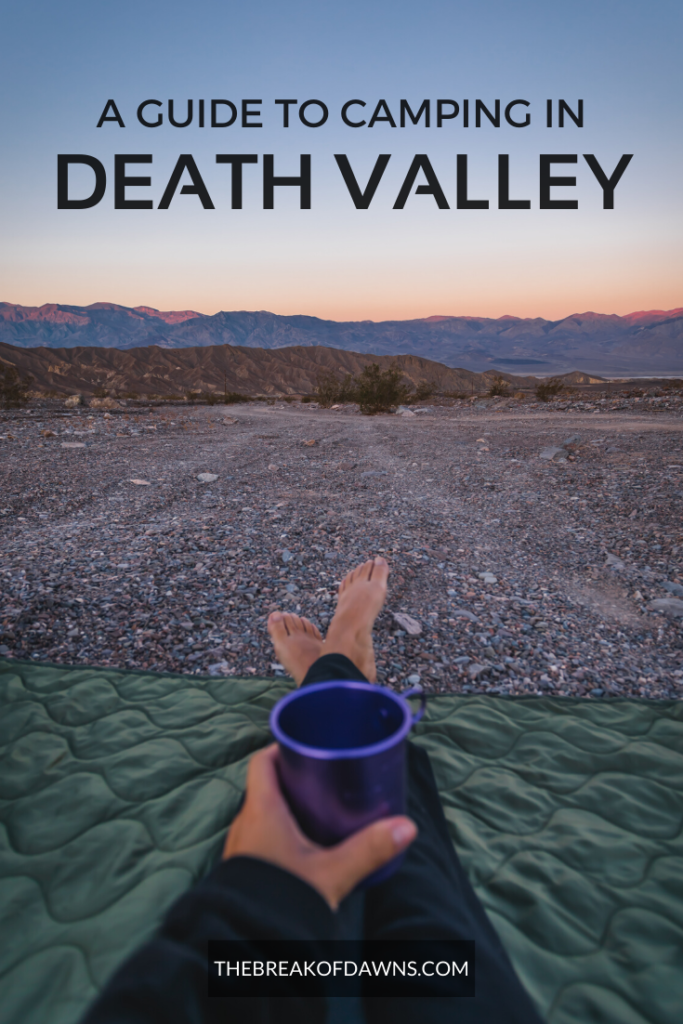
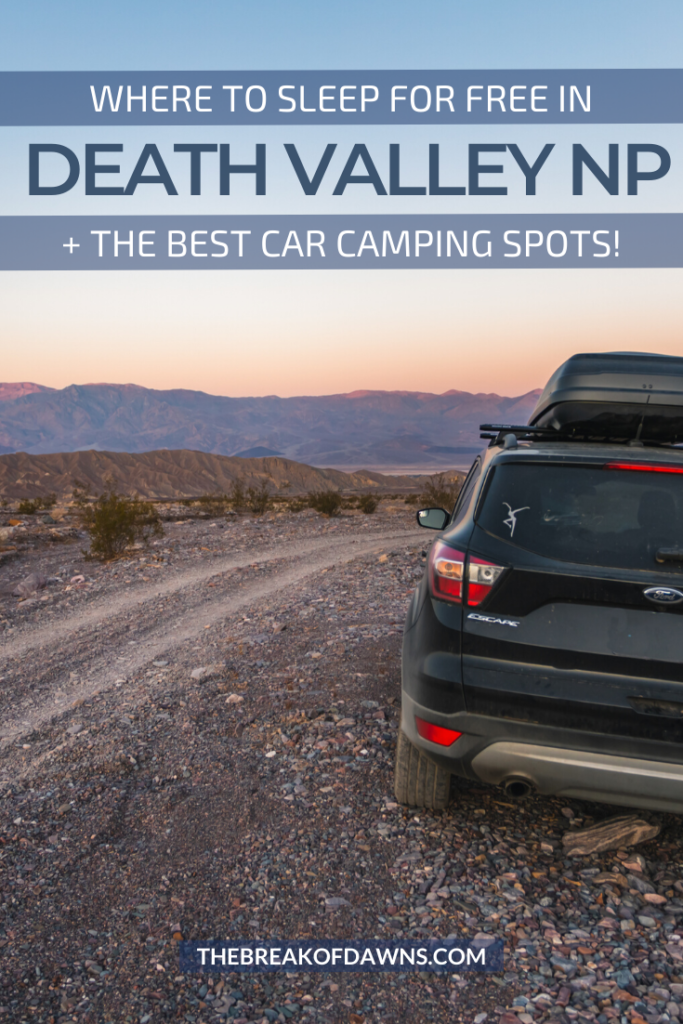
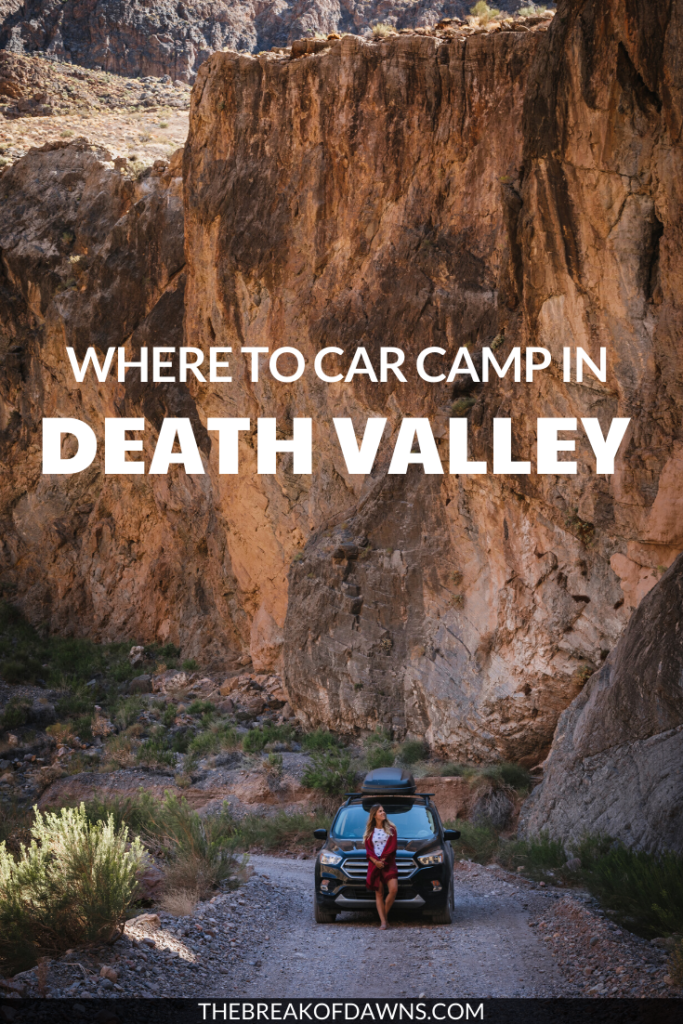

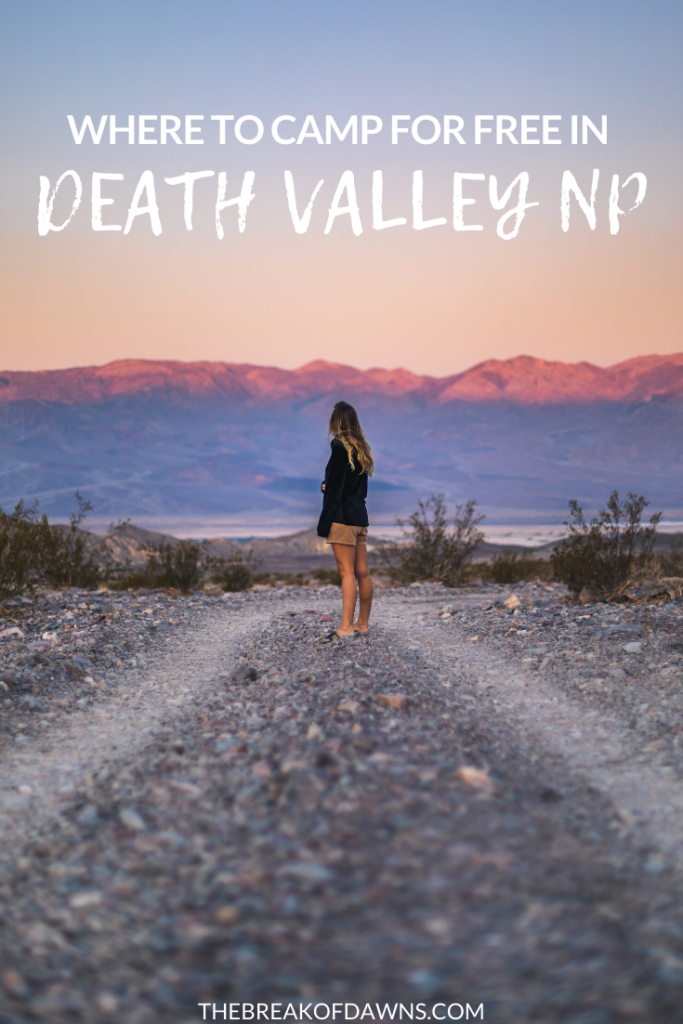
| This post contains affiliate links. At no extra cost to you, if you purchase one of these products I may receive a small commission. This helps me maintain my blog as a free space to you. Check out my Disclaimer for more info.

